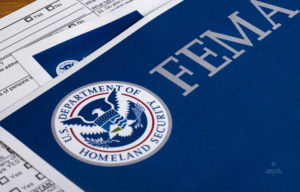News & Insights
USTR Requests Petitions from North American Auto Producers to Use Alternative Staging Regime for the USMCA Rules of Origin
On April 21, 2020, USTR published a Request for Petitions from North American automotive producers of passenger vehicles and light trucks for an alternative to the standard staging regime for the rules of origin for automotive goods under the US-Mexico-Canada Agreement (USMCA), that will soon replace the North American Free Trade Agreement (NAFTA). Petitions must be submitted via email to USMCAAutosCommittee@ustr.eop.gov, with a draft alternative staging plan on or before July 1, 2020. A final alternative staging plan must then be submitted no later than August 31, 2020. The following provides a summary of the alternative staging regime and the petition process.
The USMCA, which has been ratified by the United States, Canada and Mexico and was anticipated to enter into force as early as June 1, 2020, includes new rules of origin for certain products, including automotive goods. The new rules include higher Regional Value Content (RVC) thresholds, mandatory requirements to produce core parts in the region, mandatory steel and aluminum purchasing requirements, and a Labor Value Content (LVC) requirement. The USMCA allows vehicle producers to request an alternative staging regime for these requirements to give them a longer period of time in which to transition from the current NAFTA rules of origin to the new USMCA rules of origin to help ensure that future production is able to meet the new rules when the USMCA goes into force.
The alternative staging regime provides additional time and a different phase-in of the new origin requirements. It provides an alternative to certain rules of origin requirements for passenger vehicles and light trucks, but does not replace any other rules of origin or any provisions of general applicability for these goods to claim preferential treatment under the USMCA. For example, an alternative staging regime would allow importers of certain passenger vehicles and light trucks to have an additional two years (five years instead of three years) to meet the origin requirements, and the vehicles will be subject to different RVC and LVC thresholds. Keep in mind that an authorization by USTR to use an alternative staging regime will apply only to imports into the United States.
To qualify for an alternative staging regime, North American producers must submit a petition with the following information to USTR:
- A cover letter consisting of: (a) a request to use the alternative staging regime; (b) descriptions of the vehicle models that would be covered; (b) the share that those vehicles represent of the company’s North American production; (c) the period of alternative staging the company is requesting for each model; (d) commitment to meet the requirements during and after expiration of the alternative staging regime; (e) commitment to notify USTR of any modifications to the plan; and, (f) a statement of confidentiality of information.
- Corporate information in the U.S. and Mexico including contact information of senior executives certifying submission in the United States, Canada, and Mexico.
- Assembly Capacity (information about the company’s vehicle assembly, engine assembly, transmission assembly, and advanced battery assembly capacity, as well as information as whether such capacity would be originating under the product-specific rules under the Automotive Appendix to Chapter 4 of the USMCA).
- Production information (e.g., production assets, production facilities, total number of vehicles assembled in North America, total value of purchased auto parts produced in North America, and total value of purchased non-North American imported auto parts).
- Sales information including vehicle distribution and sales in North America.
- Information on steel and aluminum used in the production of purchased major stampings and chassis frames.
- Wages associated with R&D, IT, and direct production workers in North America.
In addition, the petitions should include detailed and credible plans if the quantity of vehicles for which the producers request an alternative staging regime exceeds a 10% threshold. For example, a plan could include commitments to make additional investments in the United States and North America, or additional purchases of U.S. and North American parts.
If the passenger vehicles or light trucks covered by the petition for an alternative staging regime are not more than 10% of the producer’s total production in North America, then no other information (other than that provided in the cover letter itself) will be required for such vehicles to be eligible to receive preferential tariff under the alternative staging regime.
However, if the vehicles or light truck covered by the petition are greater than 10% of the producer’s total production in North America, the USTR will evaluate the petition based on the level of detail and credibility of information provided in the cover letter and all the above-referenced bullet points.
Within the 30 days after receipt of a petition, USTR will notify the petitioner if there are any deficiencies, such as missing, inaccurate, or imprecise information that would result in denial of the petition. No later than August 31, 2020, petitioners must submit a final alternative staging plan correcting any deficiencies. The USTR will then make a determination for use of an alternative staging regime; however, before making a final determination, USTR will provide to the appropriate congressional committees a summary of the requests to use an alternative staging regime (the summaries will exclude any information for which the petitioners requested business confidential treatment).
USTR will maintain a public list of vehicle products it has authorized to use the alternative staging regime. If USTR subsequently determines that a producer has failed to meet the requirements of its alternative staging regime, USTR may remove the name of the producer from the list and it no longer will be eligible to claim preferential treatment under that previously approved regime.
For further details, see 85 Federal Register 2238 (April 21, 2020).
If you have any questions relating to the current NAFTA requirements, the USMCA or other international trade-related issues, please contact us.
News & Insights

Section 301 Tariffs on Chinese-Origin Goods Imported into the United States Are Now in Effect
On July 6th (12:01 a.m.), the Section 301 tariffs on imports of certain Chinese goods into the United States officially went into effect. Goods classified in one of the covered subheadings that are products of China are now subject to a

Recent Federal Maritime Commission Activity
On April 27, 2020, the Federal Maritime Commission (FMC) issued a press release of immediate interest to the international transportation community granting temporary relief from certain service contract requirements. The FMC’s mission is to ensure a competitive and reliable international


